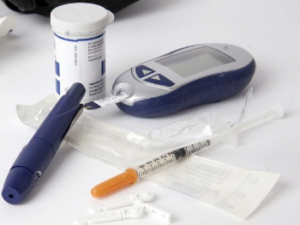- Rural America Faces Growing Shortage of Eye Surgeons
- NRHA Continues Partnership to Advance Rural Oral Health
- Comments Requested on Mobile Crisis Team Services: An Implementation Toolkit Draft
- Q&A: What Are the Challenges and Opportunities of Small-Town Philanthropy?
- HRSA Administrator Carole Johnson, Joined by Co-Chair of the Congressional Black Maternal Health Caucus Congresswoman Lauren Underwood, Announces New Funding, Policy Action, and Report to Mark Landmark Year of HRSA's Enhancing Maternal Health Initiative
- Biden-Harris Administration Announces $60 Million Investment for Adding Early Morning, Night, and Weekend Hours at Community Health Centers
- Volunteer Opportunity for HUD's Office of Housing Counseling Tribe and TDHE Certification Exam
- Who Needs Dry January More: Rural or Urban Drinkers?
- Rural Families Have 'Critical' Need for More Hospice, Respite Care
- States Help Child Care Centers Expand in Bid To Create More Slots, Lower Prices
- Rural Telehealth Sees More Policy Wins, but Only Short-Term
- Healing a Dark Past: The Long Road To Reopening Hospitals in the Rural South
- Study: Obstetrics Units in Rural Communities Declining
- Q&A: Angela Gonzales (Hopi), on New Indigenous Health Research Dashboard
- Not All Expectant Moms Can Reach a Doctor's Office. This Kentucky Clinic Travels to Them.
Pennsylvania Releases Broadband Plan
The Pennsylvania Broadband Development Authority released its plan which outlines the goals and strategies to expand broadband access across the Commonwealth.
The Authority, created by the legislature in December 2021, has been charged with leveraging the state’s approximate $100 million of federal funding over five years to ensure that more Pennsylvanians have access to high-speed internet. According to the Authority’s plan, the Commonwealth has roughly 640,000 to 800,000 Pennsylvanians that meet the FCC’s definition of being “unserved” and lack access to high-speed broadband.
Pennsylvania Broadband Development Authority Executive Director Brandon Carson stated, “Broadband access affects every area of our lives – from work, to education, to health, and safety. Closing the digital divide helps enhance our communities and fosters economic growth and innovation for all Pennsylvanians.”
To read the Authority’s plan click here.
Food Insecurity Declines for Children in 2021.
 About 10 percent of U.S. households were food insecure in 2021, meaning they had difficulty providing enough food for all their members at times because of a lack of resources. Though this number was relatively unchanged from the previous year, food insecurity for households with children declined to 12.5 percent from 14.8 in 2020. Households with no children accounted for two-thirds of food-insecure households, with single adults at the greatest risk. For rural areas, the prevalence is slightly lower than in urban areas, 10.8 percent versus 12.2 percent. The data is provided every year by the Economic Research Service at the U.S. Department of Agriculture.
About 10 percent of U.S. households were food insecure in 2021, meaning they had difficulty providing enough food for all their members at times because of a lack of resources. Though this number was relatively unchanged from the previous year, food insecurity for households with children declined to 12.5 percent from 14.8 in 2020. Households with no children accounted for two-thirds of food-insecure households, with single adults at the greatest risk. For rural areas, the prevalence is slightly lower than in urban areas, 10.8 percent versus 12.2 percent. The data is provided every year by the Economic Research Service at the U.S. Department of Agriculture.
Read About Recent Health Advisories by Pennsylvania Department of Health
The Centers for Disease Control and Prevention (CDC) recently issued a CDC Health Advisory about early, elevated respiratory disease incidence caused by multiple viruses and occurring especially among children. This early increase in disease incidence highlights the importance of optimizing respiratory virus prevention and treatment measures. The full advisory is available here. Additionally, on November 3, 2022, Gov. Tom Wolf signed into law Senate Bill 317 known as the Expedited Partner Therapy Act (EPT) (Act 147 of 2022). The EPT Act takes effect on February 3, 2023. EPT is a therapeutic option that research studies have shown to be effective in reducing chlamydia and gonorrhea reinfection rates. To read the full advisory including prescribing instructions and liability issues, click here. Lastly, per- and polyfluoroalkyl substances (PFAS) are a class of thousands of widely used, man-made chemicals that bioaccumulate in humans and animals, are persistent in the environment, and can influence health outcomes. People can be exposed to PFAS via products such as nonstick cookware, processed food packaging, certain cosmetics, and soaps, and via contaminated drinking water when chemicals migrate into the water supply (public or well water). To read the full update, click here.
Diabetes in Special & Vulnerable Populations: National Learning Series
All 14 National Training and Technical Assistance Partners (NTTAPs) will collaborate for a four-part national learning series to engage health centers, Primary Care Associations, and Health Center Controlled Networks to increase foundational knowledge of effective strategies to prevent, treat, and manage diabetes among special and medically underserved populations. Participants will explore diabetes management in relation to the following topics: social determinants of health (SDOH) and structural barriers, intersectional identities of the health center workforce and patients, emergency preparedness, and environmental impacts on access to care. Visit the series information page for more information and registration links.
Final RecommendationHave Been Released: Screening for Sleep Apnea in Adults
The U.S. Preventive Services Task Force released a final recommendation statement on screening for obstructive sleep apnea in adults. The Task Force concluded that more research is needed to recommend for or against screening adults without recognized symptoms. The final recommendation statement provides the evidence on which it is based and a summary for clinicians.
Burnout Plagues Younger Primary Care Physicians
Half of U.S. primary care physicians under the age of 55 say they’re burned out and some anticipate leaving the profession in the next three years, per a new survey from the Commonwealth Fund. It’s the latest evidence of doctor shortages that could hamper efforts to reduce health disparities and fill gaps in care as the nation emerges from the pandemic.
Amazon Intends to Deliver Health Care to Your Door
Amazon continues to explore ways to become a presence in healthcare delivery. The latest venture is Amazon Clinic, a virtual service that will operate in 32 states and provide virtual care for more than 20 common health conditions, such as allergies, acne, and hair loss. And then there is Amazon Pharmacy, “where customers can get their medication delivered to their door conveniently—in just two days for Prime Members.” Amazon has also entered into an agreement to acquire One Medical, a human-centered and technology-powered provider of primary care.
Pediatric Organizations Plea for Federal Help to Fight RSV Surge
Pediatric health provider groups are calling on the Biden administration to declare a national emergency to help them combat the surge of hospitalizations due to respiratory illnesses in children. Seasonal flu, respiratory syncytial virus (RSV) and other respiratory viruses are hitting young children especially hard this year and the resulting hospitalizations are putting an immense strain on a pediatric health system that is still reeling from COVID-19. The pediatric care organizations argue that significant capacity issues in hospitals can only be solved by a federal emergency declaration from the Biden Administration — like the ongoing COVID-19 public health emergency. An emergency declaration would allow for more telehealth flexibilities and waive certain Medicare, Medicaid, and Children’s Health Insurance Program requirements that make it difficult for providers to share resources.
Rising Preterm Births Result in D+ Grade for U.S.
The rate of premature birth in the United States is climbing, according to the infant and maternal health nonprofit March of Dimes. On Tuesday, the organization released its annual “report card” on maternal and infant health, which involves a newly updated calculation system. Taking an in-depth look at premature births, the new report found that the US preterm birth rate rose to 10.5% last year, representing an increase of 4% since 2020 and the worst national rate since March of Dimes started tracking this data in 2007, based on its new calculation system.
There Are Too Many Kids Are Contemplating Suicide
The pandemic has been hard on everyone, but new research suggests perhaps particularly so on adolescents. There has been a deeply disturbing rise in adolescents presenting to emergency departments with suicidal thoughts has jumped in recent years and was accelerating even before the COVID-19 pandemic. The research is based on data from 205 hospitals in Illinois. The state’s diverse population means findings are nationally representative, authors explained, writing in the journal Pediatrics.
